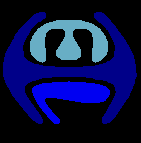
| EMERGENT EVOLUTION OF COOPERATIVE STRUCTURES |
Piero Mussio
Dip. Elettronica per l'Automazione
Via Branze 38, I-25123 Brescia, Italy
e-mail:
mussio@bsing.ing.unibs.it
In many fields of science and technology, processes can be observed which
cannot be properly modeled by traditional systemic techniques. Examples
include the development of biological entities, the behavior of the immune
network, the life cycle of interactive software systems, the mutual
adaptation of human organizations to new technologies and of technologies
to human organizations.
These processes are increasingly modeled as emergent evolution of
cooperative structures.
Using these models one renounces to expressing global laws in order to
describe the observed process. On the contrary the models focus on local
laws and communication mechanisms. The process is determined by the
activity of a cooperative structure.
Populations of agents, which share a common environment and pursue either
partaken, form cooperative structures or competing goals, by exchanging
messages or modifying some common memory support.
Each agent is endowed with its own goals, knowledge and abilities. An agent
evolves following its own local laws under the influence of the other
agents and of an external environment. Individual agents may compete for
resources, yet produce a common effect.
The cooperative structure exhibits a global behavior which cannot be
specified in advance, but which only emerges from the interaction of local
behaviors. Individual agents may not be aware of the emergent global
behavior, which is only perceivable by an external observer. These
observations can be used to validate or refuse the model.
In modeling complex processes these forms of evolution are composed so that
1) the evolution in the composition of the population; 2) the evolution of
the communication structure in the population; or 3) the evolution of the
structure of single agents in the population.
The modeling of complex process requires that these evolutionary models are
combined so that a) some agents may group themselves evolving into a new
system; the original agents lose their independence and identity and new
characters emerge; b) some agents group into a social structure: the
original agents maintain their identity but recognize the need of a social
structure and determine its emergence; the original agents lose their
independence and a new social structure emerges; the new structure may
imply that: b1) an agent becomes a leader by evolving its structure; b2) a
new agent emerges, which has a coordination role of the group; b3) agents
in the group evolve their structure to become able to coordinate
themselves; c) no grouping occurs but single agents evolve their own
identity to face the environmental stimuli; the agents maintain their
independence but new characters emerge.
It may also happen that each single agent maintains its identity and
independence, pursues its local goals and the population behavior does not
imply the emergence of any structural evolution.
These modeling techniques are also used in designing machines. Here
observers are not interested in reproducing the real process but are aimed
at building an artifact which achieves the same results of the process
observed in nature. In these cases, the model of the artificial process may
not reflect the structure of the real process even if it can be inspired by
it.
This is the case of some automatic image interpreters. An image
interpretation emerges from the activity of an observer who sees patterns -
which may also not be physically traced in the image - emerge from the
image atomic structures (signs, pixels).
The emergent evolution of a cooperative structure is here the result of a
mental process of the observer. However it can be modeled - and machine
implemented after the model - qualifying the image structures as agents
cooperating to make patterns emerge.
e-mail: hmp@ipvvis.unipv.it